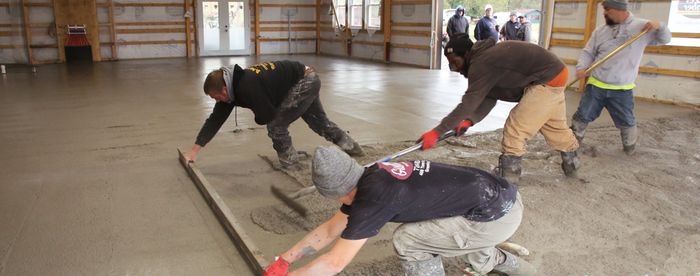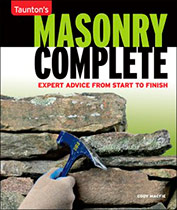Choosing and Using Masonry Trowels
Learn the types and functions of these common concrete, brick, and stone setting tools.
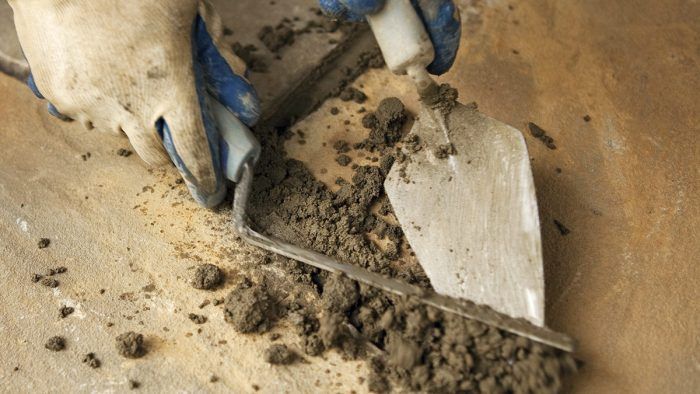
Trowels and pointers are considered setting tools. A rubber mallet is also a setting tool used to tap or set a stone into mortar without the risk of marring its surface or breaking it in half (which a sledgehammer might do).
In practice, a mason might consider tape measures, short levels, a builder’s square, chalk lines, and marking pencils as setting tools because they reside in the same bucket and are used to set stones.
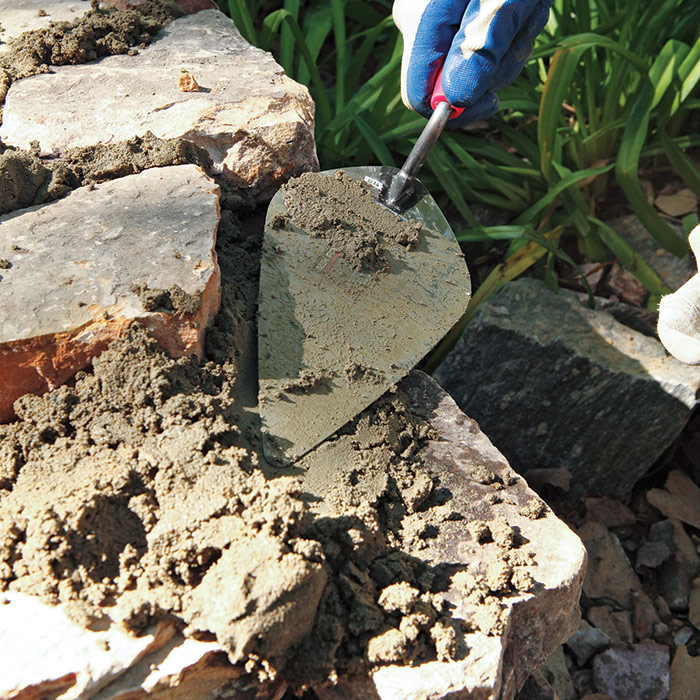
Trowels
A mason’s trowel (sometimes called a brick trowel) has a diamond-shaped blade and is used for working with both wet and dry mortar. It is the mainstay of mortar work. A 10-in. mason trowel is good for working with block, brick, and stone. A large mason trowel also makes a great dustpan and brick setter. Trowels are usually available in 10-in. to 13-in. sizes. I have a 4-in. trowel the same shape (called a pointing trowel) that I use for laying brick and small stonework in tight spaces. The shape and size of the blade are ideal for transferring small amounts of mortar and spreading small patches. One person on my crew ground down his pointing-trowel blade to 3 in. and uses it for digging mortar from bucket bottoms and packing mortar between wall stones.
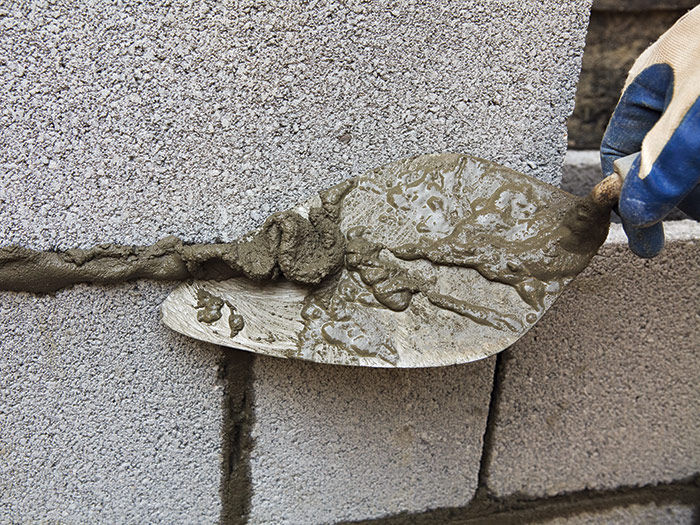


A tuck-pointing trowel has a narrow, flexible blade. It is primarily used to set mortar into joints. Tuck-pointing trowels are also used for removing mortar from between stones to leave sufficient room for grout, and for packing and shaping mortar when grouting. These trowels are available with blades of different widths. I generally use a 1⁄4-in. to 3⁄8-in. one, but you can get them as large as 3⁄4 in. for wider joints.
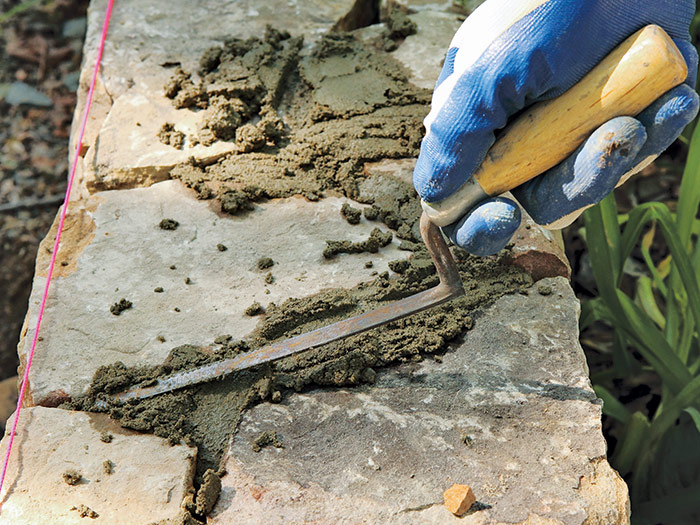
Other common trowels include finishing trowels for spreading brown coat and smoothing concrete, plastic finishing trowels for applying stucco, and margin trowels for working wide mortar joints. Stucco trowels are your best option for applying a scratch coat, or brown coat or for smoothing small areas of concrete, such as footings. They are available in 11-in. to 14-in. lengths and 4-in. to 5-in. widths. Other trowels used for general masonry include edgers, floats, and corner tools.
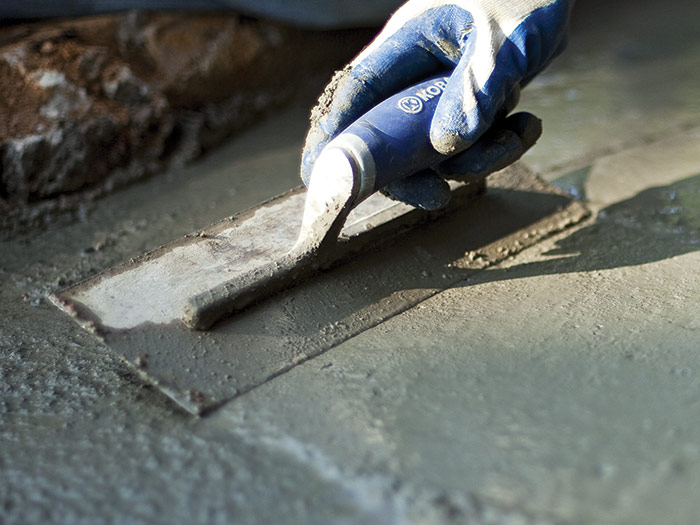
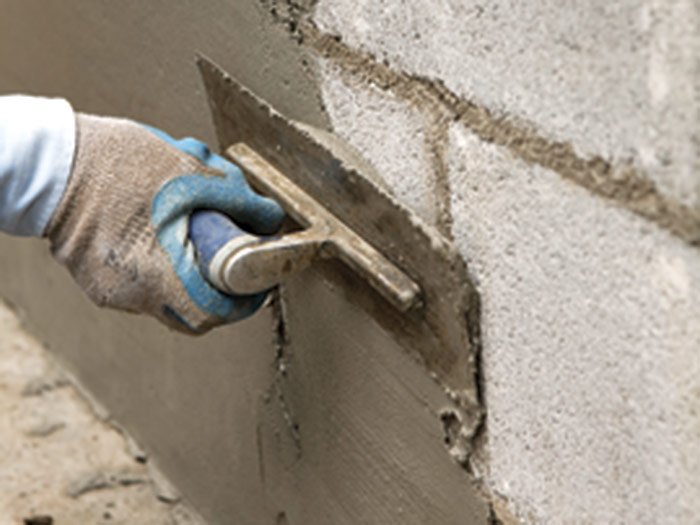
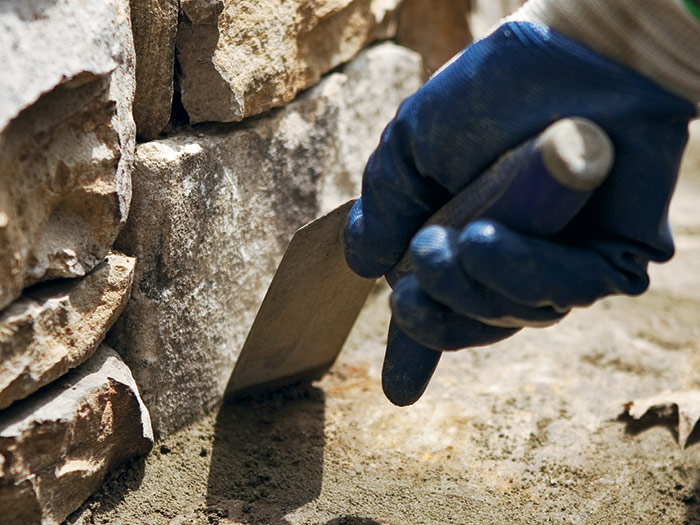
No matter which trowel you use, keep it clean and it will last longer. Once mortar sets up, it will be much harder to clean off. Over time, mortar buildup will weaken the bond where the handle meets the blade, eventually causing it to break off. Clean your trowel several times a day when possible.
Pointers and Jointers
Pointing and jointing tools are primarily used to finish joints between brick, block, and stone. Pointers are used to pack mortar into the joints of brick and stone. Jointers are used to finish the joints of stone, brick, and block work. They vary in shape, size, length, and material. Bullhorn jointers, concave stone beaders, hard jointers, double-blade slickers, wheeled-joint rakers, brick jointers, grapevine jointers, and stone and brick beaders are just some of the names you’ll encounter. Most of these are for brick joints, but some apply to stone and block.
For some stone joints, such as the extruded joint, it is essential to buy a jointer for this purpose. If your block wall is going to be veneered with brick or rock, or covered with stucco, it doesn’t really matter how you finish the joints. Your local masonry supply store should have samples of various joints and the tools with which to create them.
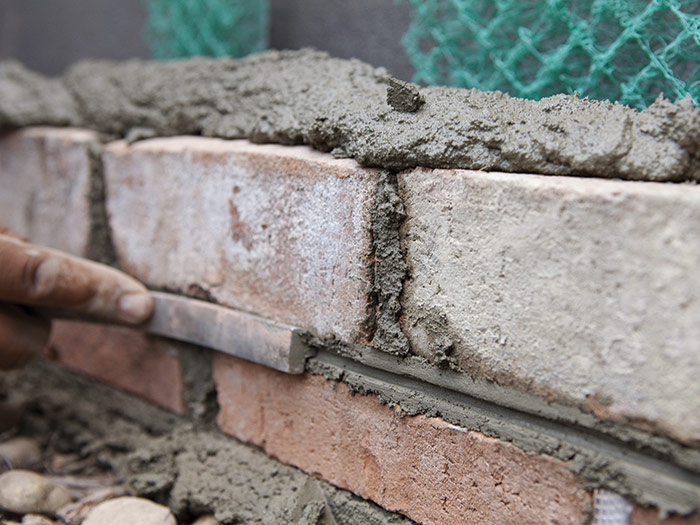
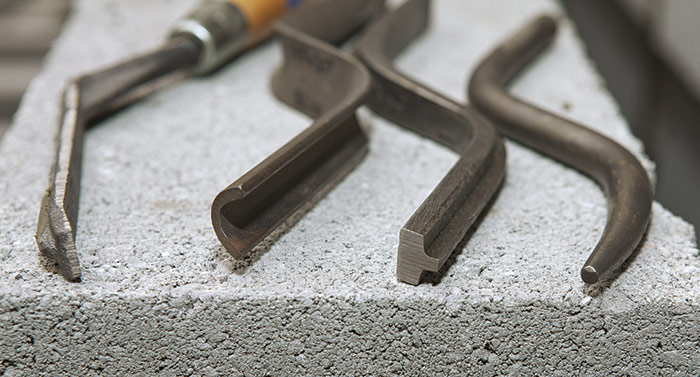
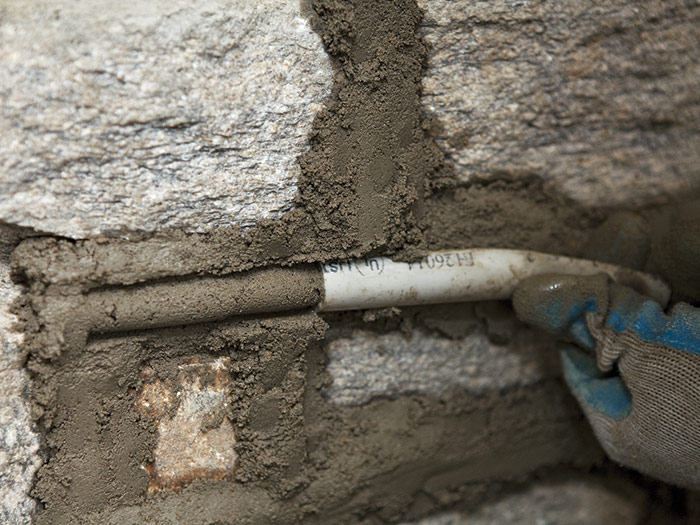
Spreading Mortar for Concrete Block
There are a couple of trowel skills you’ll need when spreading mortar for block work: spreading mortar for bedding joints on a footing or on the top of each course, and buttering the block ends. Keeping the mortar on the trowel will be the challenge because it has a tendency to slide off, but you’ll get the hang of it with a little practice.
To spread mortar on a footing, put a little on a trowel and flip the trowel down with your wrist, about 3 in. to 4 in., and come to an abrupt stop. This will level the mortar on the trowel 1. Rotate your wrist sideways and make a downward slicing motion with the trowel. The mortar should spread in a straight line on the footing 2.
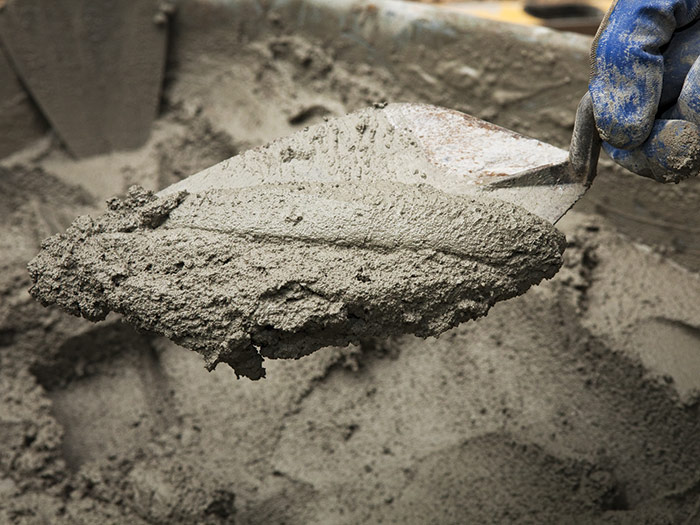
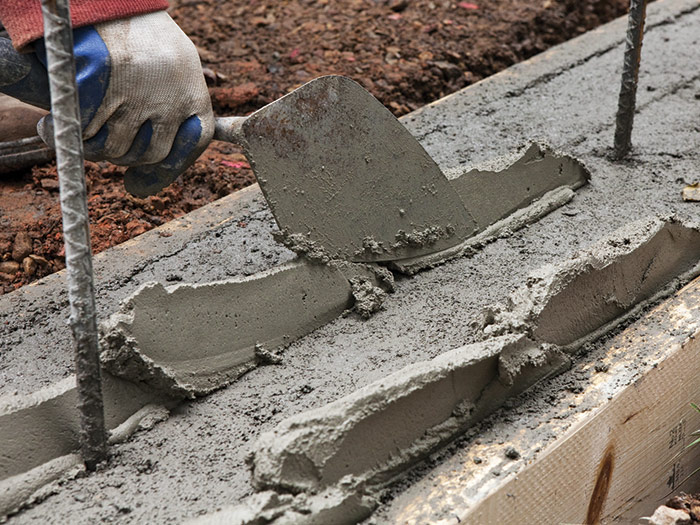
To butter ends or spread mortar on top of blocks and bricks, use the same technique to flatten the mortar on the trowel. Then turn the trowel upside down and scrape it sideways down the edge of the block. You have to do this rather quickly so that the mortar doesn’t slide off the trowel before it gets to the block 3. Do the same if you are spreading mortar on the top of a block 4.
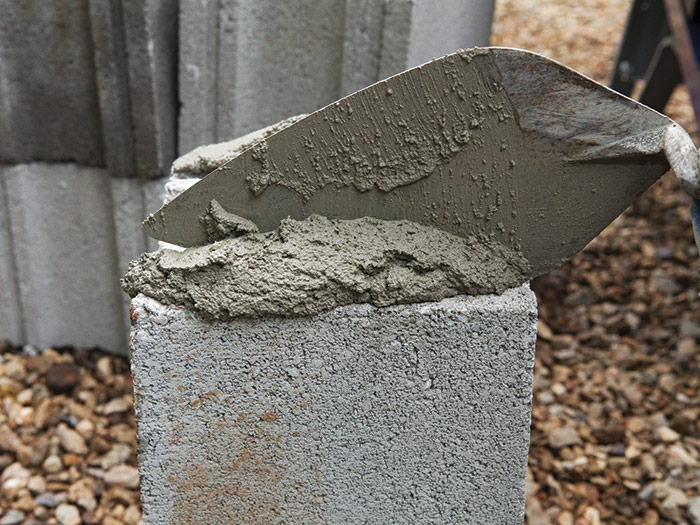
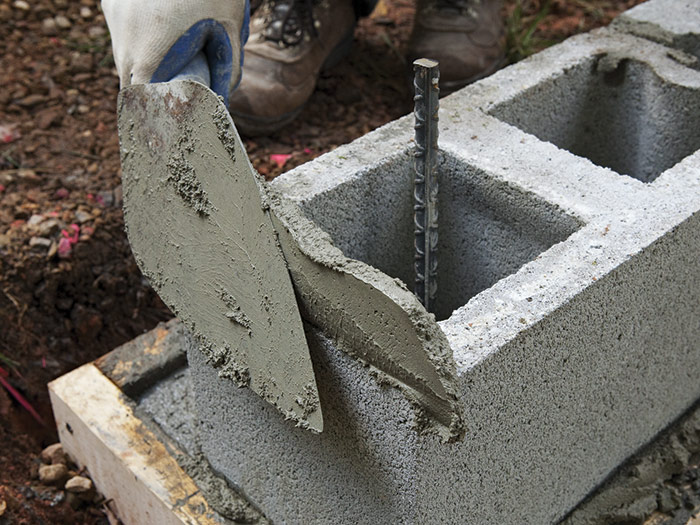
To adjust and set blocks, tap lightly with the trowel blade or handle 5. Avoid pushing on the block, because it is easy to over-adjust. Scrape away excess mortar by angling the trowel and slicing upward 6. This will remove the mortar cleanly without smearing it on the block.
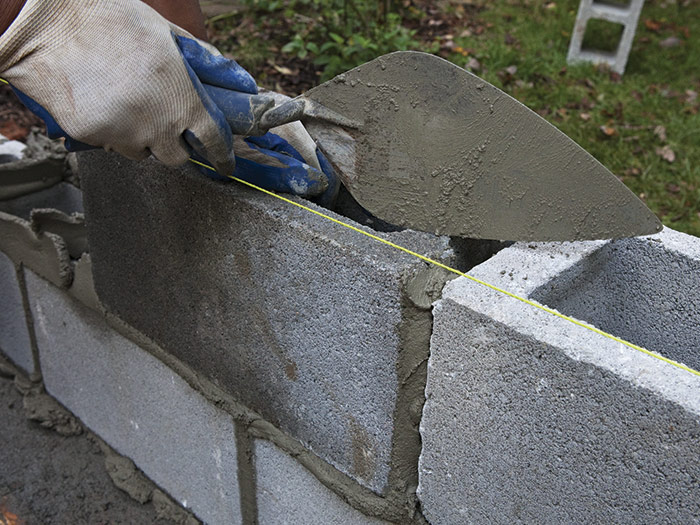
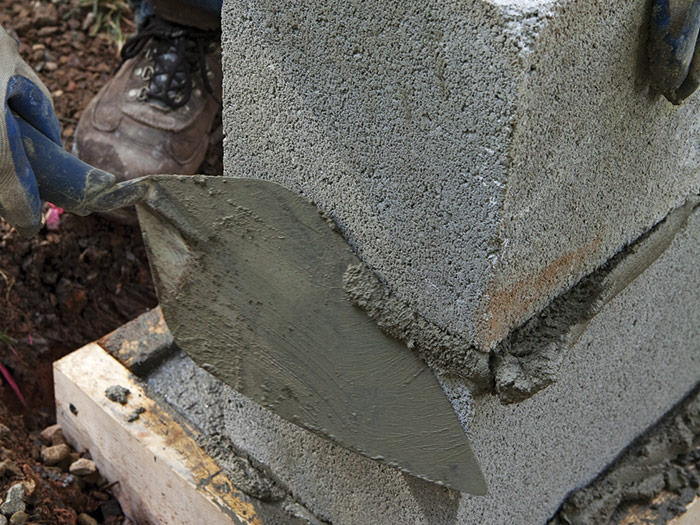
Dry-Grouting Flagstones and Capstones
There are a few advantages to dry grouting over wet grouting. It doesn’t take as long to apply, and it is a cleaner process. The disadvantage is that when the mortar dries, it is not as dense as wet grout because it’s not mixed with as much water. Water can therefore penetrate the joint over time. I recommend dry grouting on porches or indoors, places that are not as exposed to water.
Mix the mortar and sand using this recipe. Add just enough water to the mix so it retains its shape when you form a ball in your hand 1. If it crumbles, add more water. If it sticks to your hand or glove, you’ve added too much water.
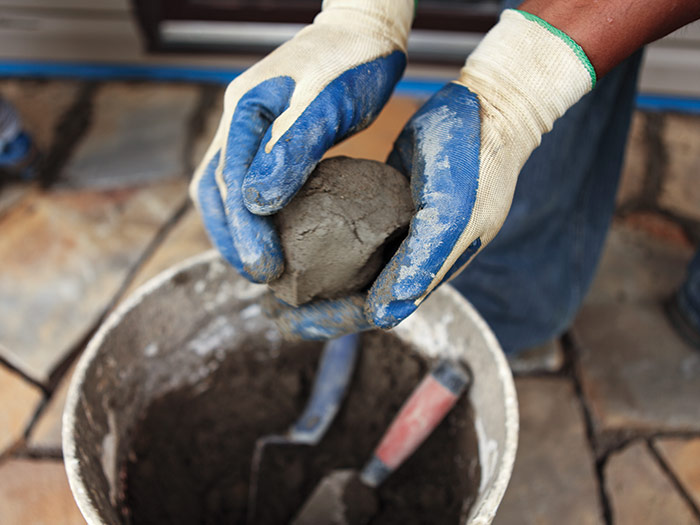
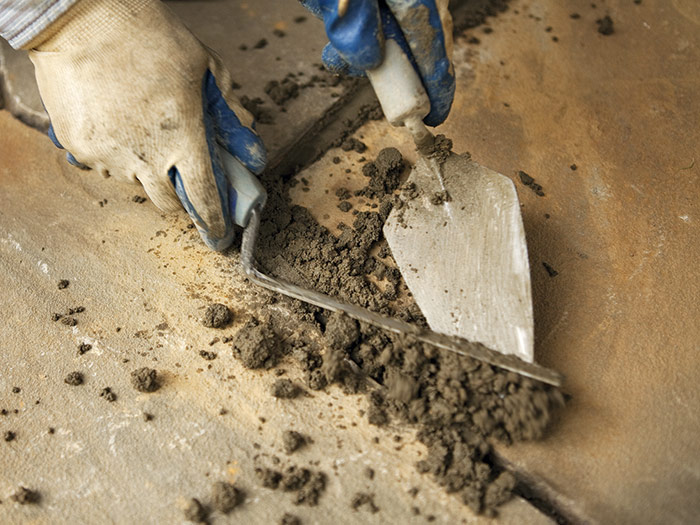
Pick up some mortar with your trowel and press it into the joints with a tuck pointer 2. Press firmly and pack enough so that it rises above the flagstone surface 1⁄4 in. 3. Let the mortar dry slightly and then rake it flush with the top of the flagstones using the blade of your tuck pointer 4. If the mortar leaves stains on the edges of the stones, let it dry for a little longer and then try scraping it off. Do not let the mortar dry for too long or it will be impossible to remove.
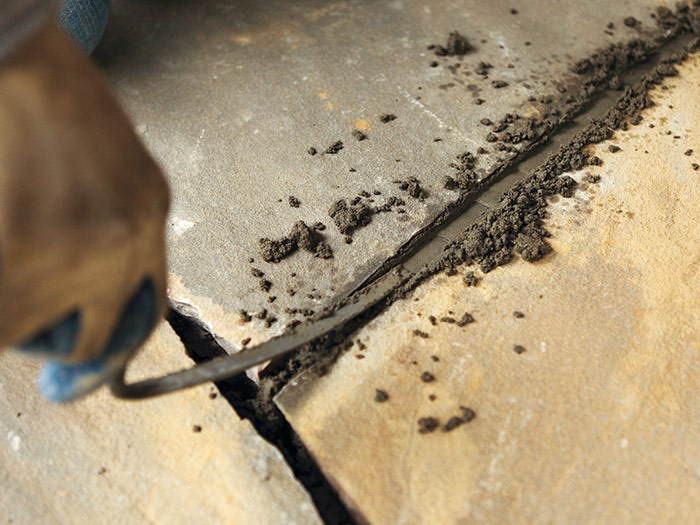
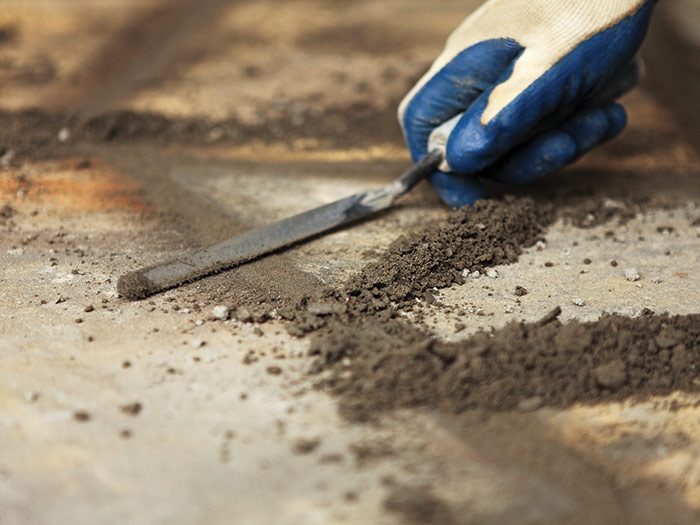
As you work, scrape the excess into piles. Let the joints dry for about 30 minutes and then sweep away the dust and debris 5. If there is staining on the stones, use a nylon brush to scrape it off. Do not put too much pressure on the joints until after they cure for a day or two.
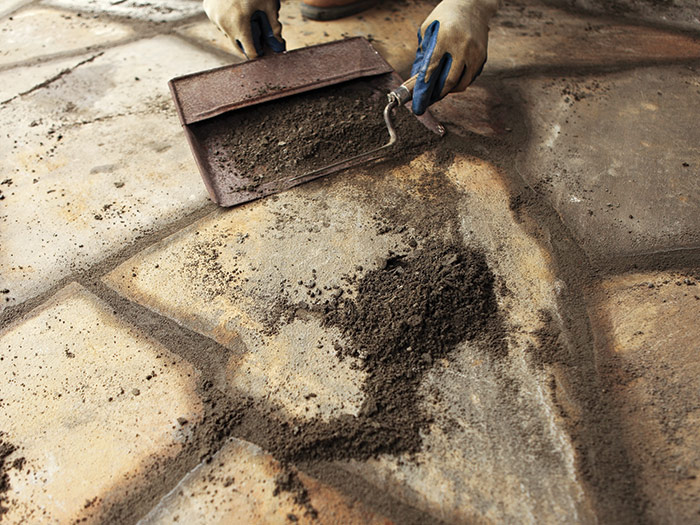
Excerpted from Masonry Complete (The Taunton Press, 2012) by Cody Macfie
Available at Amazon.com.
